As a young Filipina living in Manila and striving to create my own kind of impact, I believe deeply in female mentorship. I’m always reading articles and profiles about my favorite designers, authors, and entrepreneurs to draw inspiration from their struggles and pick up what they learned along the way.
Although it comes as no surprise that Filipinas have played big roles in history, it still never ceases to amaze and inspire me when I come across stories of Filipinas who have overcome insurmountable odds. These women who demonstrate the bravery, creativity, skills, and wisdom that I deeply admire and continue to learn from.
Granted, their struggles and situations differ greatly from my own - some lived in the middle or wake of a war, others in authoritarian regimes - nonetheless, their lives are a testament to the scale of our contributions and lasting impact.
This list is far from comprehensive, but it’s a place to start. Here are five Filipina women who have made history and continue to inspire today.
1. Gabriela Silang (1731-1763) - Leading the bloody and perilous road to emancipation
Maria Josefa Gabriela’s story is one that dismantles the idea that women are only victims of war. She rose to become the very first female leader of the Philippine revolution. Over 300 armed revolts led by Filipinos rose against the Spanish regime and Gabriela Silang led one of those armies after her husband, resistance leader Diego Silang, was assassinated.
She earned the title of “Henerala” which meant “woman general” and possessed the fighting spirit and determination of her husband, maybe greater. She led her troops for four months before being captured and executed in 1763.
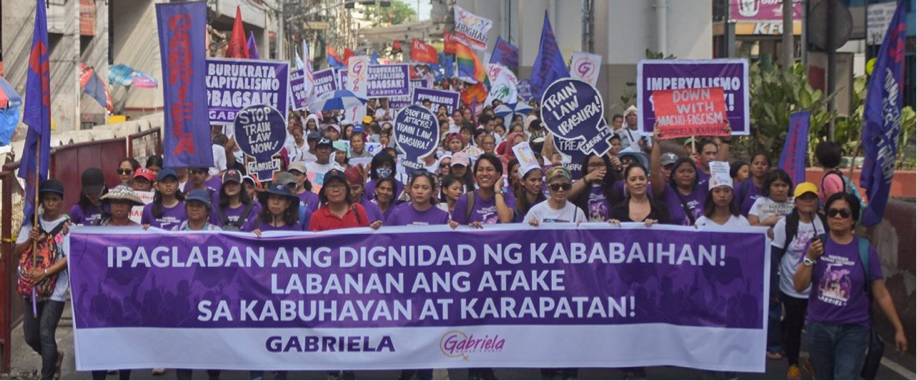 Gabriela during International Women’s Day
Gabriela during International Women’s Day
Her deeds inspired the creation of the country’s leading grassroots women’s alliance, the General Assembly Binding Women for Reforms, Integrity, Equality, Leadership and Action (GABRIELA) which seeks to wage a struggle for the liberation of all oppressed Filipino women and the rest of the country. It’s now spread to countries around the world and continues to have a strong presence to this day.
2. Fe Del Mundo - Valuing life and recovery in the time of war
Among Fe Del Mundo’s many accomplishments is the fact that she was the first woman admitted to the Harvard Medical School as part of a two-year fellowship. She decided to return to the Philippines in 1941 to volunteer for the International Red Cross to practice as a pediatrician.
Her work led her to care for children detained at the University of Santo Tomas internment camp during the Japanese Occupation, where she was hailed as the “Angel of Santo Tomas”. She pioneered treatment for children with jaundice, creating a series of studies and inventions that led to jaundice-relieving devices and incubators made of bamboo, an invention that was both inexpensive and reproducible by the poor.
In 1957, she opened The Children’s Medical Center, a hospital she had financed herself by selling her own home, became the first pediatric hospital in the Philippines. In November 27, 2018, Del Mundo was honored with a Google doodle, which could be viewed in the Google homepage.
 Google’s dedication to Fe Del Mundo during her 107th birth anniversary
Google’s dedication to Fe Del Mundo during her 107th birth anniversary
3. Eugenia Apostol (1925) - Spearheading the fight for truth
Dubbed as the “great dame of journalism,” Eugenia Apostol was the founder of the Philippine Daily Inquirer (PDI) , one of the leading media organizations of the country. Her quest for truth also led to the political downfall of two Philippine presidents.
During her time, it was the notorious leader Ferdinand Marcos who led the nation. In Time magazine, an account was written of Apostol and her colleague, “Apostol, now 81, and Magsanoc, in her mid-60s, were not firebrands in their younger days. Both were veterans of the lipstick beat, writing for the lifestyle sections of newspapers. But the assassination of Aquino, which sparked [the People Power Revolution], galvanized Apostol and Magsanoc to break the local media's complicit silence surrounding Marcos' oppressive rule.”
It was during in 1983 that Mr & Ms Special Edition was born, where on the cover was the bloodied face of Aquino, the slain opposition leader. Out of this fearless and no-holds-barred approach to coverage rose the Philippine Daily Inquirer, which is considered today as the country's largest newspapers.
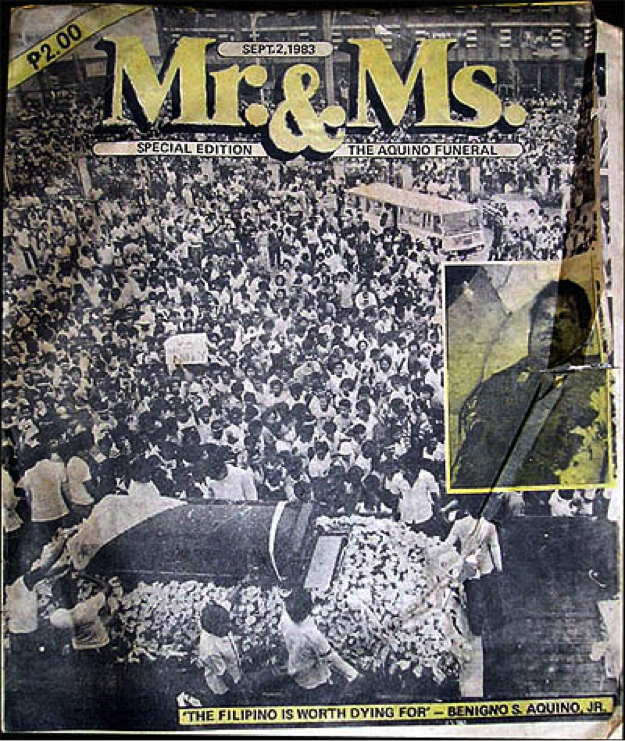 The Special Edition of Mr & Ms Magazine
The Special Edition of Mr & Ms Magazine
When President Joseph Estrada called for an advertising boycott of the Philippine Daily Inquirer and sued Manila Times over a corruption story, Apostol set up the Pinoy Times, a newspaper that was readily affordable and available to the masses. The paper was met with hate that included bomb threats, hate mail, and libel suits from Estrada supporters, who at one point published an imitation tabloid in an attempt to undermine it. When Estrada was ousted in 2011, the newspaper’s life slowly declined, but it had already done its job of awakening the consciousness of the Filipino people.
4. Paz Márquez-Benítez (1894- 1983) - Broadening the reaches of Philippine literature
Paz Márquez-Benítez is known for being two things: a matriarch and a pioneer. She is the woman behind the first Philippine short story in English, “Dead Stars,” which has been hailed as the first modern short story written in English and is still being read to this day by college students as an introduction to Philippine literature.
Said to be “tall and elegantly attired in full terno” she was “a familiar figure on the campus of the pre-war University of the Philippines.” Paz Márquez-Benítez was a teacher of their English department from 1916 to 1951, and a mentor and confidante to the many writers who would later dazzle the country with their works.
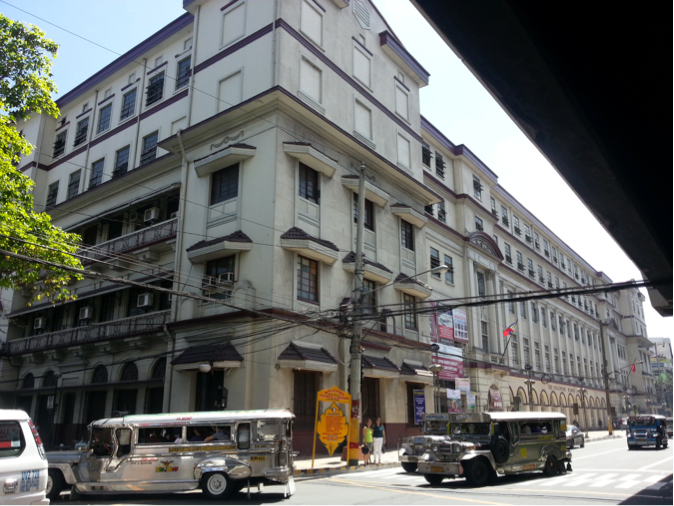
The Philippine Women’s University today
She also made strides in publishing and education. Paz Márquez-Benítez founded the first women’s magazine in the country called “Woman’s Home Journal” in 1919, and compiled and edited the first anthology of Philippine short stories in English in 1928. She, along with six other women, also founded the then Philippine Women’s College, known as the Philippine Women’s University today.
5. Concepcion Felix de Calderon (1884 - 1967) - Proving that a woman’s voice matters
Concepción Felix de Calderon was one of the first women who awakened Philippine feminism. In June 1905, she established one of the first women's organizations in the Philippines, Asociación Feminista Filipina. The following year, the Asociacion Feminista Ilonga was founded by Pura Villanueva Kalaw. The two organizations became the face of Philippine suffragism and promoted the participation of women in public affairs.
During the Japanese occupation, Concepción Felix de Calderon found herself extending her work to address issues in health, hunger and poverty. Her work led to the establishment of a milk station center that answered the nutritional, sanitation, and medical needs of war-affected Filipino kids. This project is better known today as Gota de Leche.
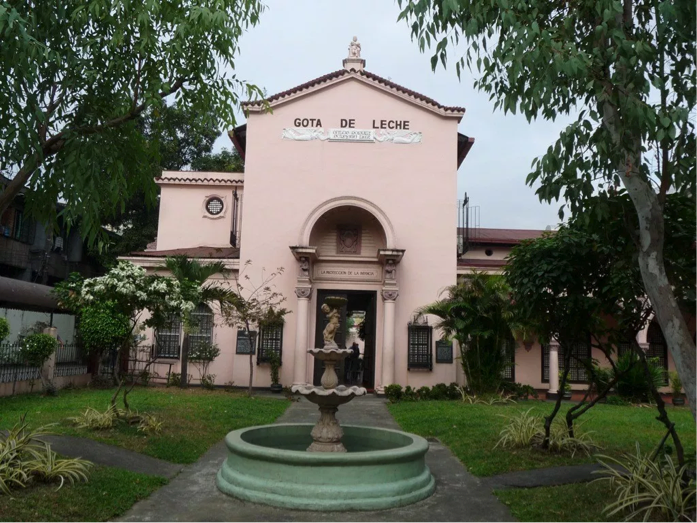 The Gota De Leche Building in Manila
The Gota De Leche Building in Manila
The women listed above were stirred by their passions and the needs of their times. While reading their stories, I can’t help but make connections to the women we feature here on our blog and those that Cambio partners with. The passionate and amazing Filipinas who are using their talents, courage, and determination to uplift other women and the rest of the world. They could be seen as modern Filipina heroes, responding to issues that most often intersect with the female struggle: unjust labor, climate change, poverty, and many others.
I am reminded of Reese Fernandez-Ruiz, who founded Rags2Riches, one of the earliest brands to meld fashion, beautiful design, strong ethics, and sustainability and have since inspired generations of younger Filipino entrepreneurs to follow in their footsteps.
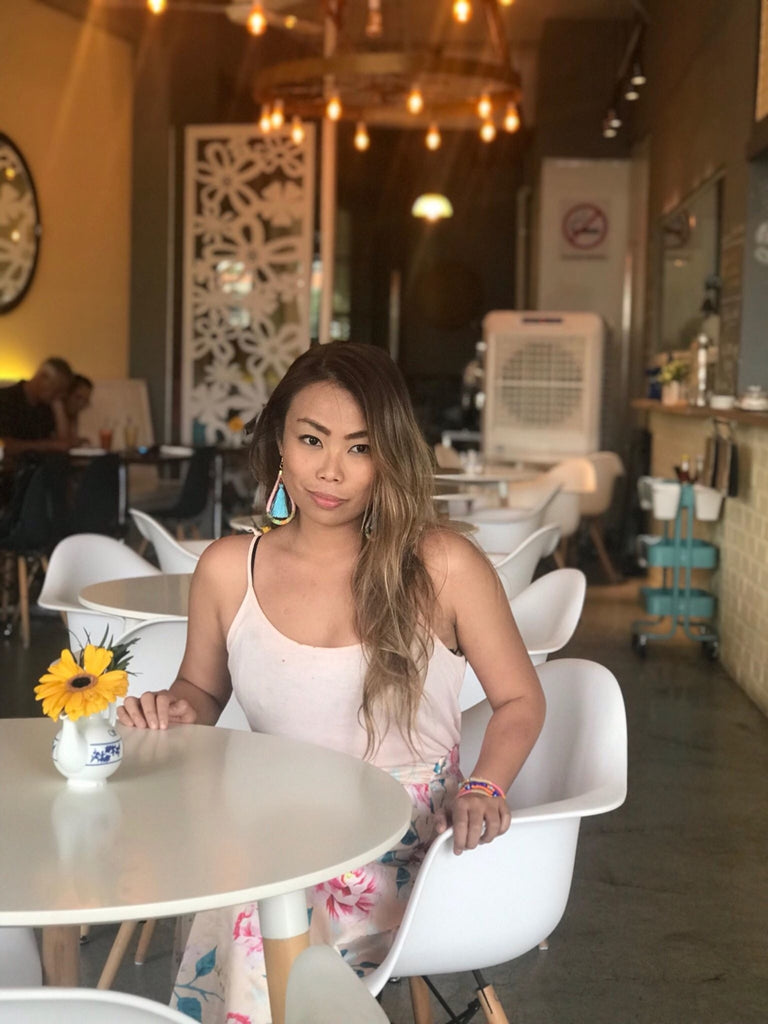 Yana Santiago, founder of our partner En Route Handcrafted Accessories, is a modern Filipina trailblazer.
Yana Santiago, founder of our partner En Route Handcrafted Accessories, is a modern Filipina trailblazer.
Who also comes to mind is Yana Santiago, founder of Olivia & Diego (now En Route Handcrafted Accessories),who opened our eyes to the North American textile waste clogging Philippine landfills and became a saving grace for young women who became victims of sex trafficking and domestic violence in Davao City.
This also mirrors Danielle Tan and Christine Tiu’s efforts in providing local artisans in the Philippines with a livelihood from the forgotten craft of gold filigree jewelry.
Through these women, Cambio gets to work with artisans and weavers who stand as mothers and daughters, at the same time as contributing members of their communities.
These Filipinas, both entrepreneurs and employees, alive in this day and age, can be considered heneralas in their own way, climbing their own mountains and fighting the forces that threaten their value and place. While, on the other hand, they serve as nurturing matriarchs of society who allow life and hope to thrive where at first it did not seem possible.
Want to read more about inspiring Filipina trailblazers?
Subscribe to our weekly newsletter for stories from the Filipin* diaspora and the homeland, plus updates on how you can support Filipina entrepreneurs and artisans in the Philippines.
Zea Asis

Zea is a nonprofit professional in her past life. She now works for a design platform with the goal to democratize design and grow their online communities. Outside of work, she goes boxing, is learning how to design clothes and constantly curating her closet to look like a cool grandma.



Leave a comment